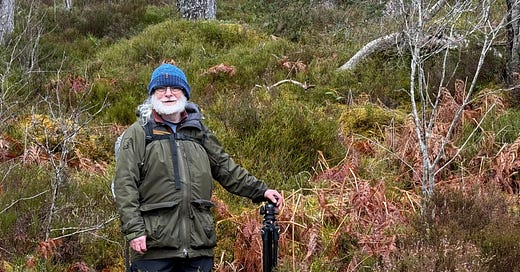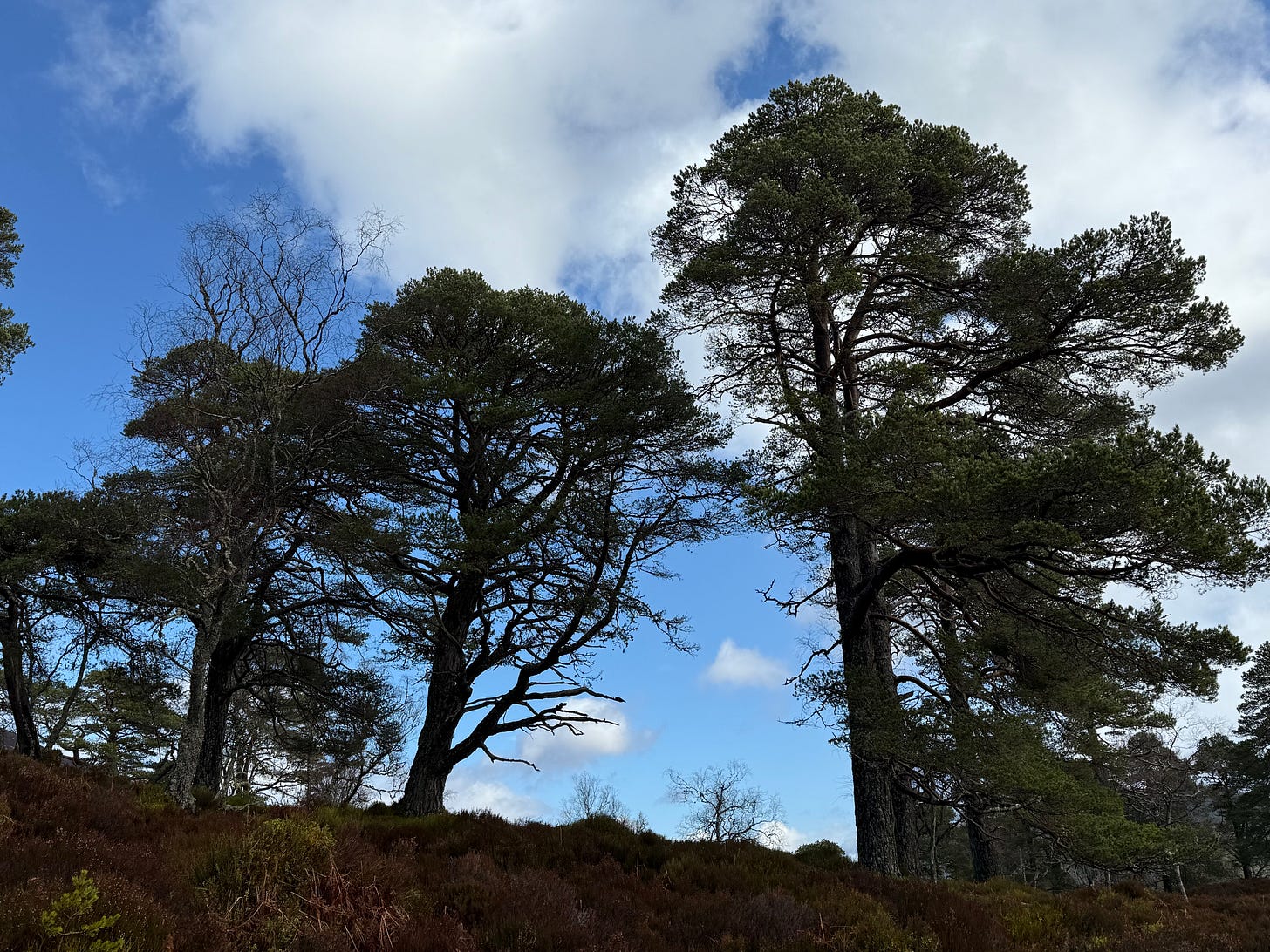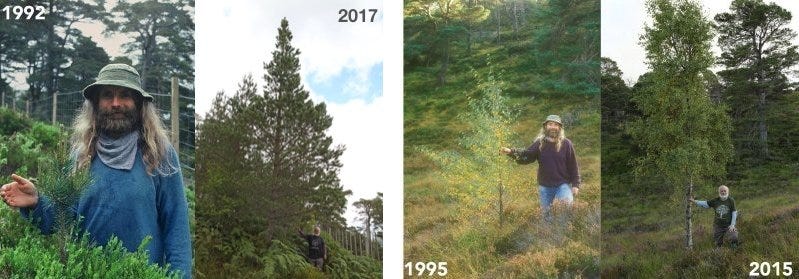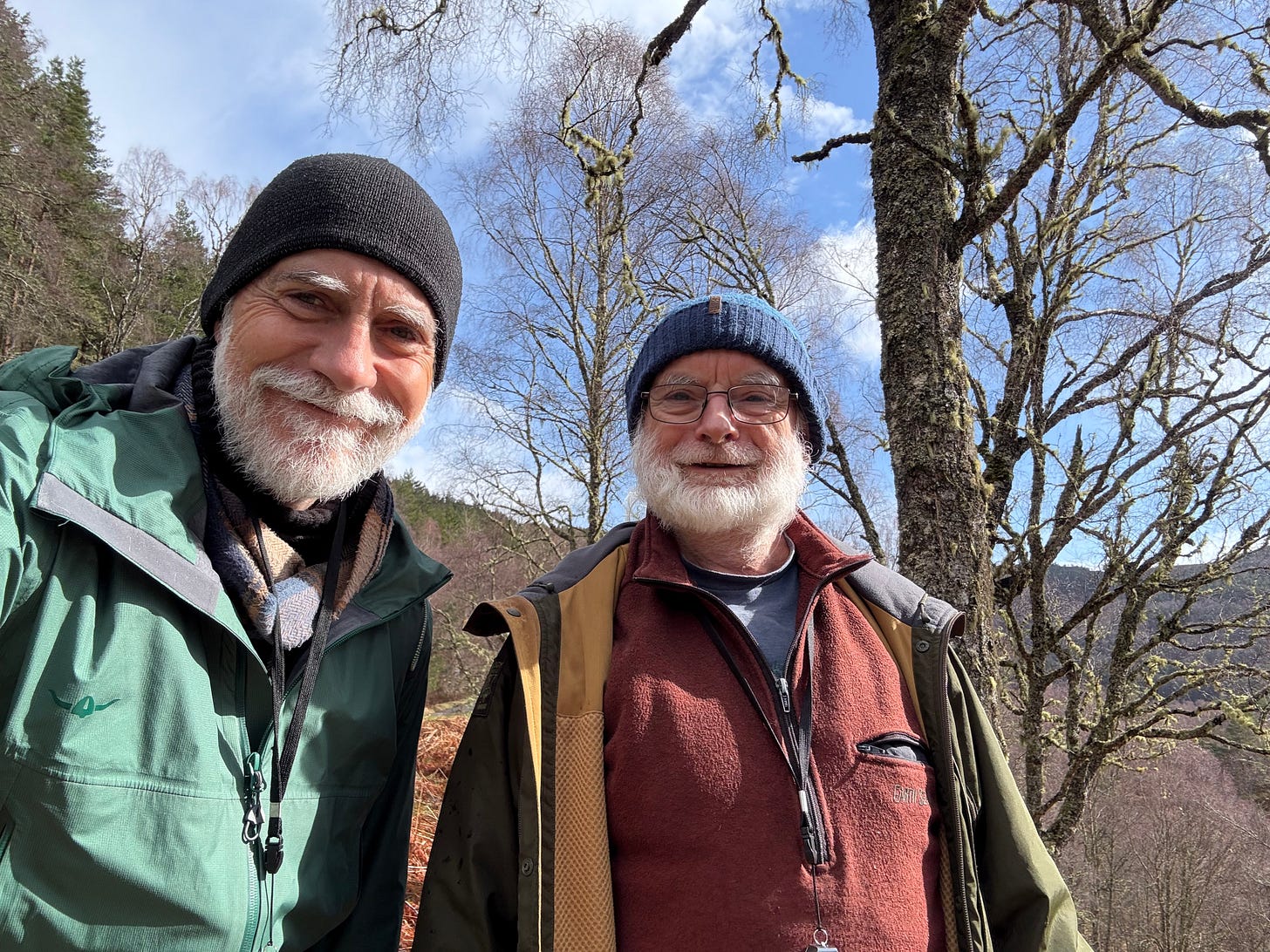Last weekend I got to spend very special day with Alan Watson Featherstone. We were in Glen Affric for nearly nine hours and at some point, I realized that, compared to the way Alan sees and understands the world around him, I am blind.
Now mind you, I’m making my way. I’d like to think that I’m quite perceptive, that I pay attention, that I have great curiosity and learn new things all the time. But I feel that Alan lives what I’m trying to live at a whole different level. Alright then, let’s get into it.
We left Findhorn early as it was quite a drive to where we were going. Once past Inverness and off the main roads, we slunk our way on ever narrower streets into the glen and along the River Affric and then along Loch Beinn a’ Mheadhoin. Eventually we parked, mounted waterproof boots, packed rain gear (we would need it and then some!), and off we went, climbing the slope dotted with old Scots pine woods, and almost propelled upwards by deep layers of spongy undergrowth. I thought it was beautiful – and it was – but it was nothing compared to what was to come.
To properly tell Alan’s story, it would require the length of a book. And hey, in my own way, I just may one day (thoughts about that at the end). When you learn about his journey, you soon see that he’s seemingly lived several lives by now. From his early travels, to becoming an instrumental part of the Findhorn Foundation (a place that can teach the world a thing or two about community, spirituality and sustainability), to founding, living and growing Trees for Life … and in all of it, he’s always aimed for more understanding, more learning, more clarity, more simplicity, more care … more love.
After a long way up, surrounded by tall trees and a sea of moss-covered ground, alive like gentle waves around the hummocks, we reached a fence. Even on the way up, Alan had stopped here and there, pointing at a tree and explaining what a certain shape revealed about its life, or at frog spawn, or lichen and fungi. He had with him magnifying loupes and gave me one to occasionally zoom in close to what character, colors or patterns a fungi close-up would reveal. I realized that, where I walk past most things most of the time, Alan is attentive, alert, aware – and he gives it time.
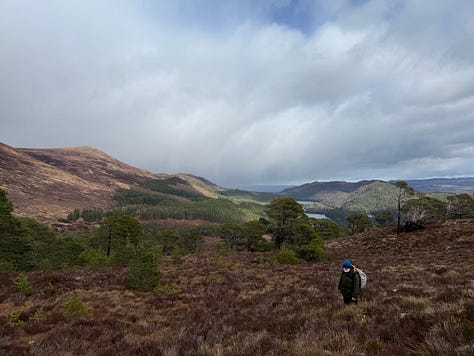
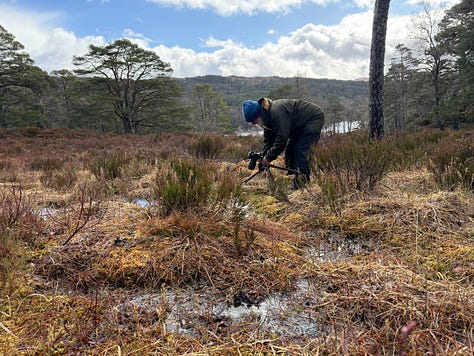
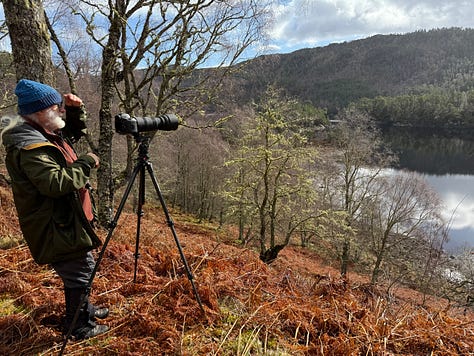
Where my blindness really became apparent to me was when we stepped into the vast Coille Ruigh na Cuileige exclosure that had been built up there in 1990 to keep deer out, to allow the natural regeneration of Affric woodlands. This 50 hectare exclosure had come about, as Alan told me, because a study had shown that the land contained an estimated 100’000 seedlings. The agreement with the Forestry Commission to build the exclosure was a milestone.
Back then, barely anyone knew about Trees for Life and Alan was told that they should make the most of the momentous occasion when the exclosure would be officially closed, and thus officially free of deer browsing. When they found out that famous botanist David Bellamy would be in Scotland on that day, they managed to engage him for the act of closing the gate. Journalists were informed and eagerly tagged along for the occasion. Alan remembers that it made quite a splash in the media and helped amplify the work of the nascent Trees for Life.
Alan opens the gate and we step through. Again he highlights this tree and that tree, like the Champion Pine (see above on the left) and then, as I look around, and only then, do I see the difference to the other side of the fence. Until then, there had been marvelous trees, two-hundred and more years old … but no young ones. Everything that I had seen, until the fence, was a geriatric forest, a dying forest. The reason is one, just one, the reason is deer. Whatever tries to grow and is spotted by deer, will be nibbled away at the top. The result is that, year after year after year, no next generation has a chance to join the old ones.
“Coille Ruigh is unique amongst the various exclosures in the Glen Affric National Nature Reserve, in that it is the only one in which natural regeneration is the exclusive and only method used to achieve restoration of the Caledonian Forest there – all the others have experienced at least some planting or other conservation management as well.” (Alan Watson Featherstone)
Inside the fence, new trees are growing everywhere. Everything feels lush and vibrant. Young Scots pines, rowan, birch, juniper and more. We had been fortunate with the weather until then, and so decided to just continue on up. We would stop to take photographs here and there – and eventually, like Alan, I began to zoom into the little things. I saw why there were more trees in one place, fewer in others. I saw where wind would blow seeds. And I found myself admiring moss, almost losing myself in colors and textures.
Life becomes a lot clearer when you focus on the little things.
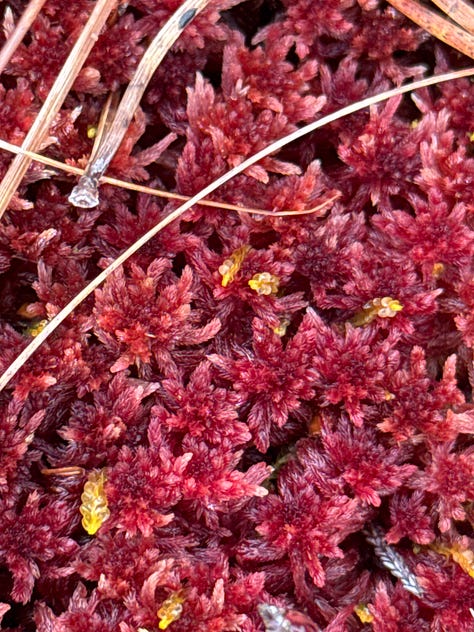
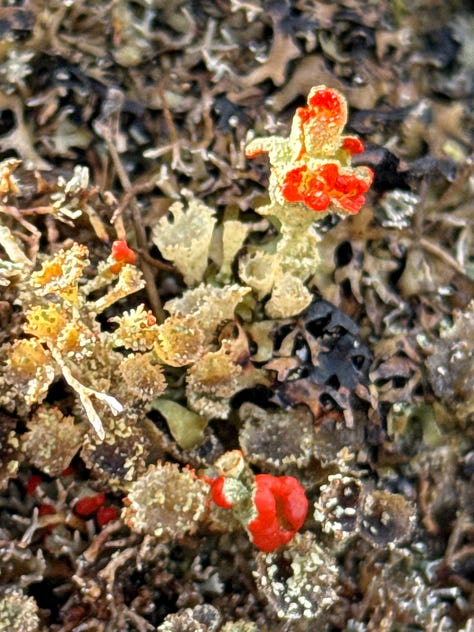
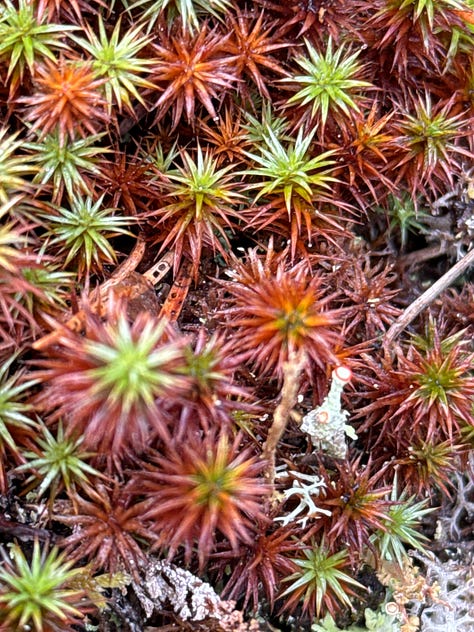
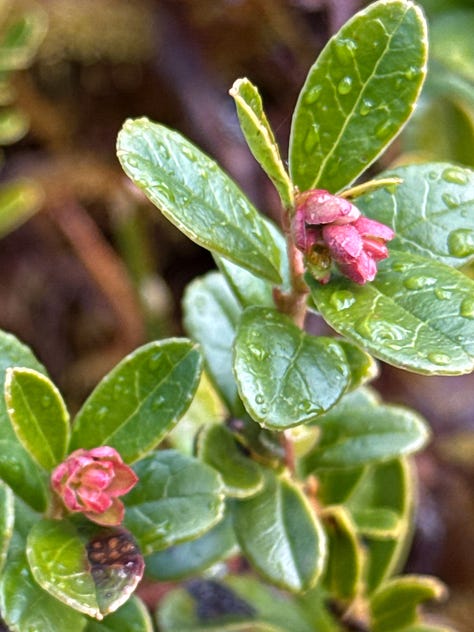
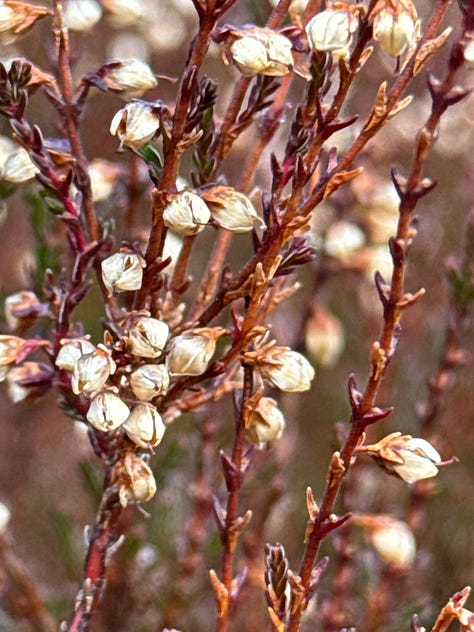
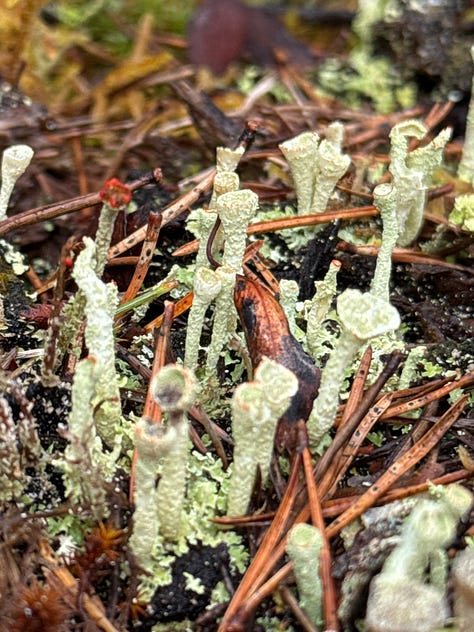
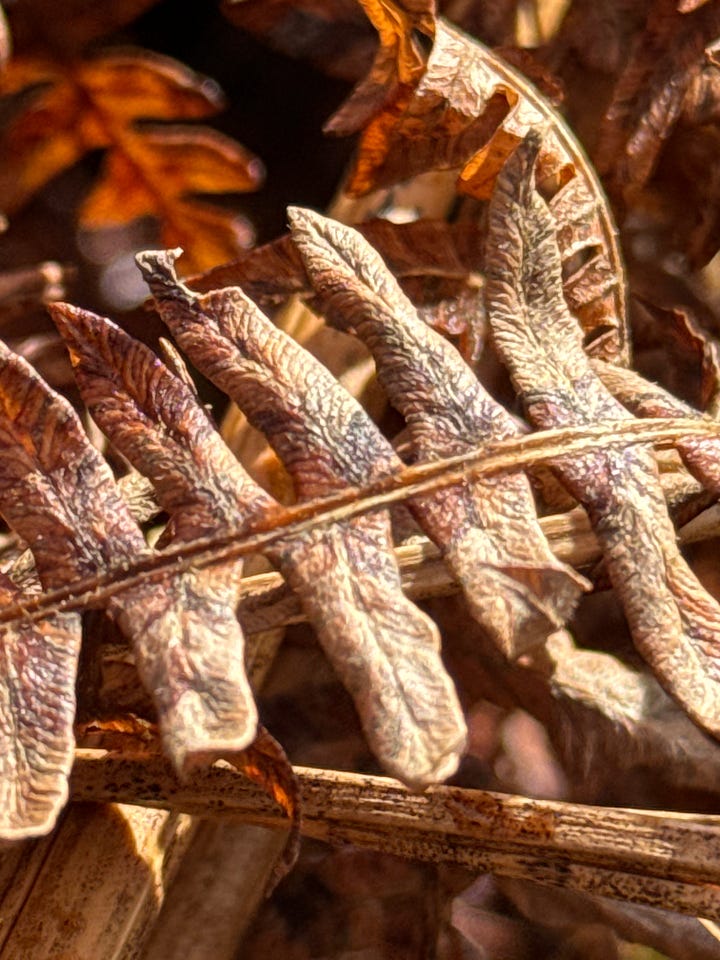

By then we could see to the snow-covered top of what I think was Càrn Eige and Alan pointed across the to a hill on our right, saying that, in Gaelic, the hill’s name had the word forest in it. He didn’t have to say more, the message was clear – on that hill, run by a traditional estate, there wasn’t a single tree. Clearly once upon a time a forest had given the hill its name, just as clearly, human endeavors have turned that hill’s name into a bad joke.
It was time to slip into our rain gear – wind was picking up and the snow-covered mountain was wrapped into a snowstorm. It was a good distance off and we really wanted to get to the very top of the exclosure, so we grinned into the biting wind and rain and moved on. Eventually the rain turned into sleet, then snow, then hail … there was a moment when Alan wanted to take a photograph and asked me to shield him and the camera. While I was being pelted by hail that was coming in sideways, I couldn’t stop laughing. The hike kept us warm, the gear kept us dry – it was amazing being out there.
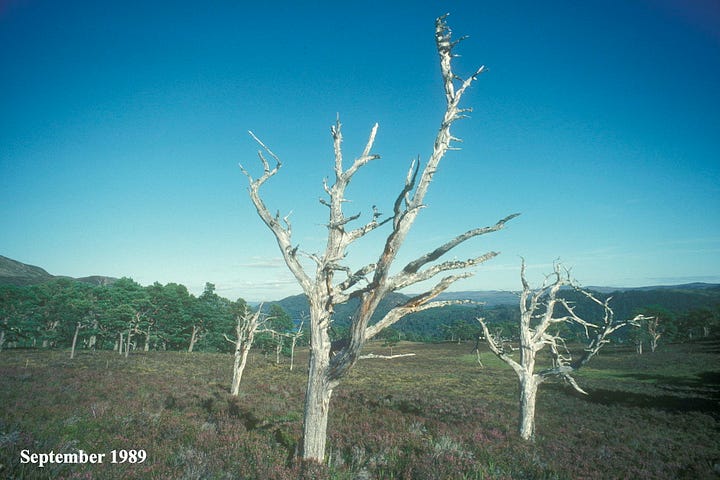
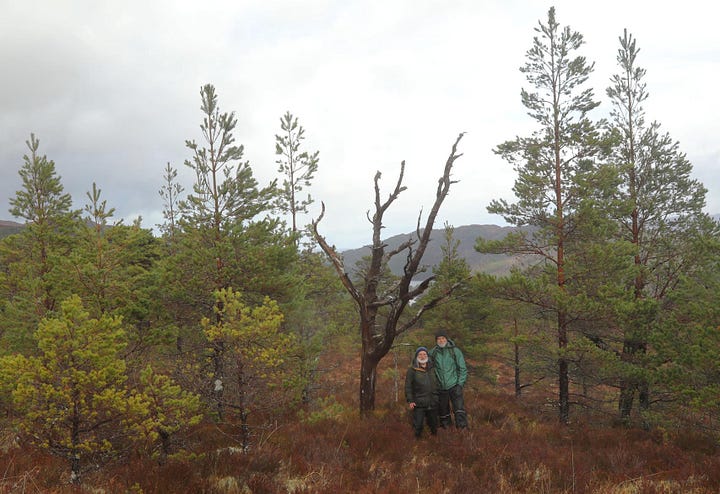
It’s been thirty-five years since the exclosure went up. Not a single tree has been planted within those fifty hectares. What has happened since 1990, is undeniably illuminating. What you see there is what happens a) in the absence of deer and sheep and b) with time. The time element is invariably a challenging one for our species. Compared to trees, we live short lives. When we do something, we want to see results before long … but when you work with nature, you must learn patience. You must think, if not like a mountain, at least like a tree.
Alan is so much a part of the natural world, deeply immersed and deeply caring, when you get to spend time with him, you may think, like me, that there’s something almost otherworldly about him. This is of course is an indictment on our own species and on our way of living, because, clearly, Alan simply lives in a mindful way that most of us do not.
At one point he suggested that, since I write novels, I should write one about a rewilder. Well, should I ever write that novel, then it’ll be an easy start, because I’ve already found my protagonist.
Cheers,
If you enjoy the Rewilder Weekly …
… consider supporting my work. Your paid subscription will help generate the funds needed to realize a unique rewilding book I’m working on. And, of course, that paid subscription also ensures that the Rewilder Weekly will always keep going for those who cannot afford to pay. A thousand thanks!


